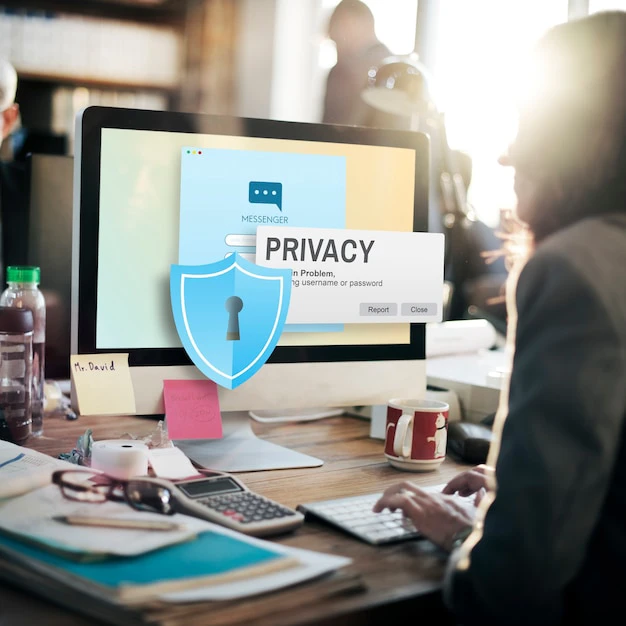END-TO-END CYBERSECURITY SERVICES FOR DIGITAL RESILIENCE
Protect critical systems with enterprise-grade security.
500+ companies rely on our top 1% tech talent.
Yes. We cover your tech stack.
Proven track record with 500+ projects across 50+ industry sectors.
Cybersecurity Development Services We Provide
Cybersecurity Risk Assessment
Identify gaps before attackers do. We run advanced security audits with Qualys, Nessus, and OpenVAS to uncover system weaknesses and minimize risk exposure.
Intrusion Detection and Response
Detect threats in real time and respond faster. Using Wireshark, Snort, and Suricata, we set up continuous monitoring to block breaches before they escalate.
Endpoint Detection and Response
Gain visibility across every device. Our team deploys AI-driven EDR tools like Carbon Black to analyze behavior and neutralize threats swiftly.
IT Governance, Risk, and Compliance
Stay audit-ready. We help align your IT operations with frameworks like HIPAA, GDPR, and ISO 27001 using RSA Archer and ServiceNow GRC.
Vulnerability Scanning
Proactively identify weaknesses in networks and systems. We use OpenVAS and Nessus to flag risks and prioritize remediation.
Penetration Testing
Simulate real-world attacks to find and fix vulnerabilities before they’re exploited. We use Metasploit, NMap, and Wireshark to stress-test your defenses.
Key Things to Know About Cybersecurity
Effective cybersecurity allows your business to:
- Avoid Exploits – Prevent data leaks and downtime by identifying threats before they materialize. Our managed services offer 24/7 monitoring and incident response.
- Reduce the Chance of Data Loss – Your data is your most valuable asset — our cybersecurity services help keep it protected, encrypted, and compliant.
- Access the Latest Security Intelligence – Stay ahead of threats with real-time threat intel and continuous updates to your defense strategies.
Year after year, businesses across the globe experience more cybercrime than ever before. In fact, in 2023, it was predicted that cybercrime would cost businesses over $11.50 trillion dollars. This figure will continuously rise over the coming years, reaching an anticipated $23.82 trillion by 2027.
As the mounting cyber threat continues to leech more capital from businesses, it’s never been more important to rely on comprehensive cybersecurity services to keep your business safe. Continual threat intelligence, risk monitoring, and vulnerability testing will help to detect and neutralize cyber threats before they create any major issues for your organization.
Effective cybersecurity allows your business to:
- Avoid Exploits –Prevent data leaks and downtime by identifying threats before they materialize. Our managed services offer 24/7 monitoring and incident response.
- Reduce the Chance of Data Loss – Your data is your most valuable asset — our cybersecurity services help keep it protected, encrypted, and compliant.
- Access the Latest Security Intelligence – Stay ahead of threats with real-time threat intel and continuous updates to your defense strategies.
Every industry has a unique map of threats that commonly plague their businesses. In response to changing requirements, different sectors have numerous initiatives, regulations, and minimum standards to adhere to.
For example, cyber security services in healthcare have strict privacy laws to keep patient records safe. Due to this, the minimum requirement for patient privacy and security monitoring is much higher in healthcare and other related industries than in logistics.
The following industries have the highest distribution of cyber attacks:
- Manufacturing: 24.8%
- Finance and Insurance: 18.9%
- Professional, Business, and Consumer Services: 14.6%
- Energy: 10.7%Energy: 10.7%
- Retail and Wholesale: 8.7%
Every business must be aware of the rules and regulations outlined by the jurisdiction(s) they fall under, as well as any sector-based standards that impact their industries.
By closely following general data protection rulings, area-specific guidance, and industry standards, businesses are able to develop a comprehensive cybersecurity protocol to keep themselves and their customers safe.
Legal and regulatory standards help outline responsibility, determine liability, and prepare companies with cybersecurity defenses. Leading cybersecurity services will always include legal and regulatory compliance management initiatives as a core part of security strategy.
Best Practices for Cybersecurity
Enforce Complex Password Requirements and Regular Changes
Require strong password hygiene and regular resets to reduce brute-force attacks.
Develop and Conduct Specialized Cybersecurity Training Programs
Empower your team with tailored security awareness training, including phishing simulations and compliance protocols.
Conduct Regular Phishing Simulations and Social Engineering Training
Reduce the human attack surface by educating employees through realistic threat modeling and exercises.
Adhere to ISO 27001, GDPR, HIPAA, or other Cybersecurity Frameworks and Standards
Maintain compliance and strengthen your security posture by aligning with industry-leading frameworks and regulatory mandates.
Policy and Training
Technical Safeguards and Monitoring
Automate Software and Operating System Patch Management
Use automation to ensure timely updates of software and operating systems for security.
Implement Two-Factor or Multi-Factor Authentication (2FA/MFA)
Enhance security by requiring additional verification steps during authentication processes.
Deploy Firewalls, Intrusion Detection Systems (IDS), and Intrusion Prevention Systems (IPS)
Use these tools to monitor and protect networks from unauthorized access and attacks.
Use End-to-End Encryption for Data In-Transit and At-Rest
Protect data integrity and confidentiality by encrypting data both in transit and at rest.
Monitor Network Traffic and Logs with SIEM (Security Information and Event Management) Tools
Utilize SIEM tools for real-time analysis and monitoring of security alerts generated by network hardware and applications.
Utilize Advanced Endpoint Protection Platforms (EPP) and Endpoint Detection and Response (EDR) Solutions
Implement advanced solutions for endpoint security to detect, investigate, and respond to cyber threats.
Implement Secure Cloud-Based File Sharing and Storage Solutions with Access Controls
Ensure secure data storage and sharing in the cloud with robust access control mechanisms.
Data Management and Access Control
Implement Regular Data Backup Strategies with Encryption
Regularly backup data using encrypted formats to prevent data loss and unauthorized access.
Implement Role-Based Access Control (RBAC) and Least Privilege Principles
Control access to sensitive information based on user roles and the principle of least privilege.
Secure VPN Access for Remote Employees
Provide secure VPN access to ensure safe and encrypted connections for remote workers.
Secure Wireless Networks with WPA3 and Network Segmentation
Utilize the latest wireless security protocols and segment networks to enhance security.
Incident Response and Continuous Improvement
Perform Vulnerability Scans and Penetration Testing Routinely
Regularly conduct tests to identify and address system vulnerabilities.
Develop and Regularly Update an Incident Response (IR) Plan
Prepare and maintain an effective plan for responding to cybersecurity incidents.
Apply Security Configurations and Updates to Endpoints and Servers
Ensure all endpoints and servers are secured with the latest configurations and updates.
Integrate Security Practices into the Software Development Life Cycle with DevSecOps
Embed security practices into all stages of software development for proactive risk management.
Conduct Continuous Security Performance Metrics Analysis and Improvement Cycles
Continuously assess and improve security performance using relevant metrics and feedback loops.
100s of companies worldwide trust us for their Cybersecurity services.
Why Choose Ettla for Cybersecurity Development

Robust Security Measures
We provide 360° protection — from penetration testing and encryption to incident response and disaster recovery.
Diverse Range of Talent
Our global cybersecurity network includes certified security analysts, ethical hackers, DevSecOps experts, and compliance specialists.
Bespoke Solutions
No two businesses are alike. We design tailor-made security strategies that scale with your technology, risks, and regulatory needs.
Our process. Simple, seamless, streamlined.

step 1
Initiate discovery.
We assess your current security posture, compliance needs, and risk exposure to define a customized cybersecurity plan.
step 2
Develop a strategy and build your team.
We assemble a hand-picked cybersecurity team and build a roadmap that aligns with your infrastructure, data, and compliance priorities.
step 3
Get started.
We execute threat monitoring, testing, and security upgrades while keeping your team informed with detailed reports and KPIs.
Frequently Asked Questions
What should I look for when choosing a cybersecurity services company for my business?
What are the most common types of cyber threats?
How can a company effectively assess and improve its security posture?
How should a company prepare and respond to a data breach incident?
Navigate
Related Articles
Looking for reliable Cybersecurity development services?
See how we can help.





